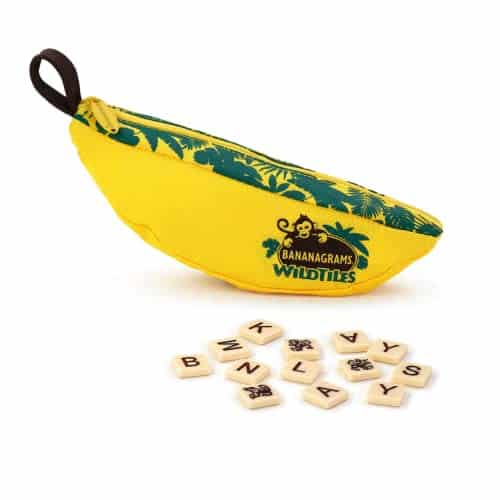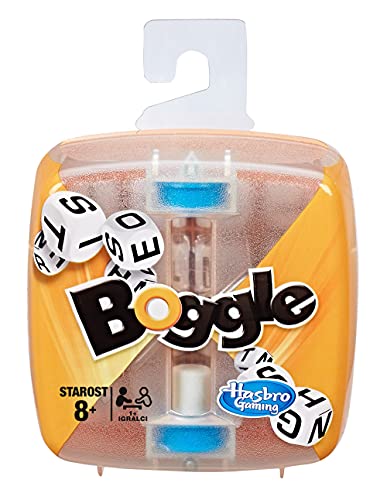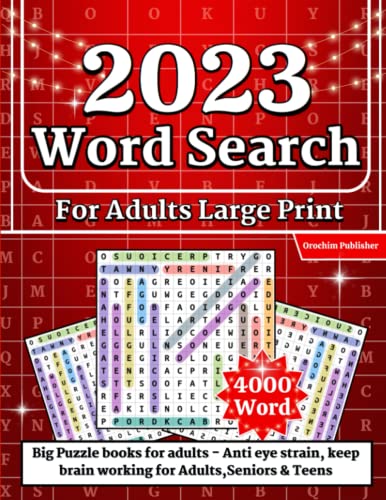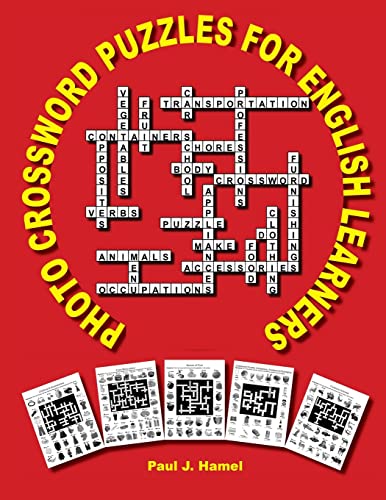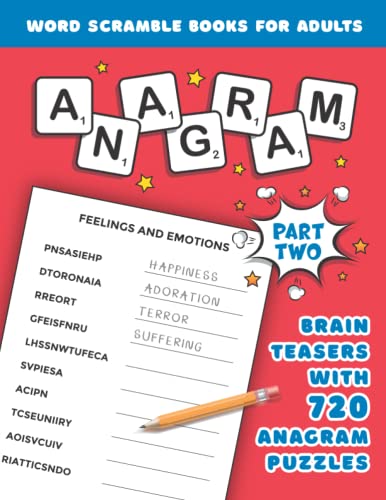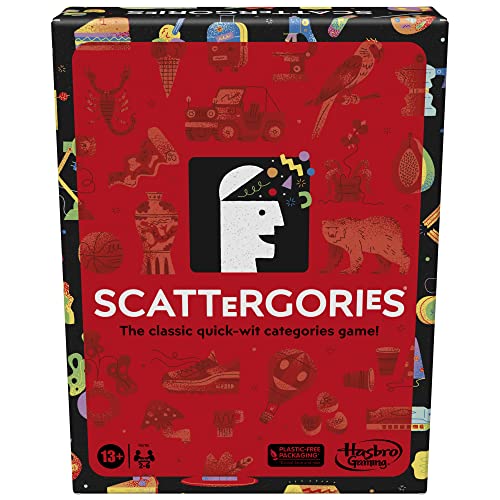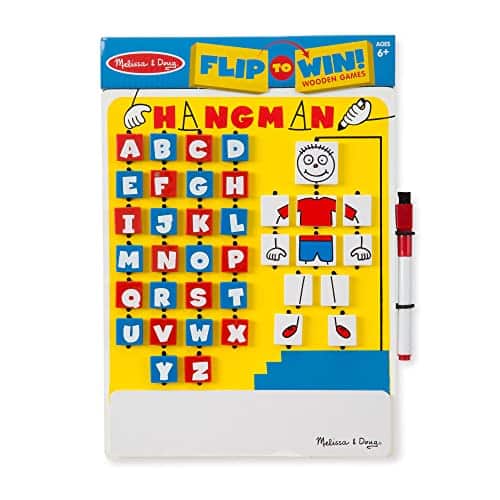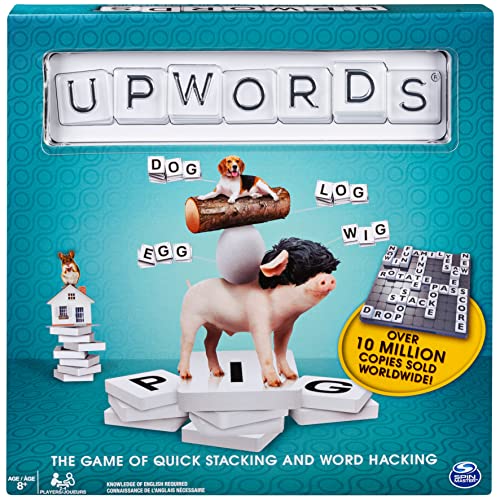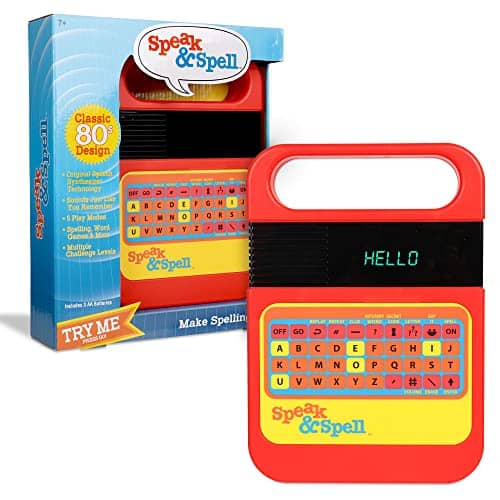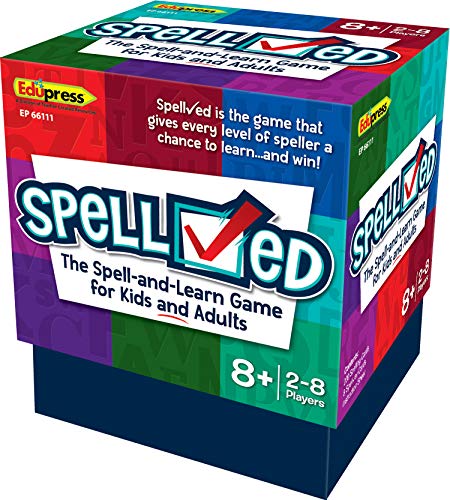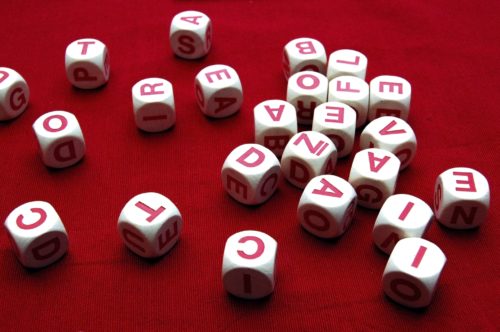
12 ESL Spelling Games
When taught correctly, spelling can be fun for the whole class.
Whether your students find proper spelling easy or a nightmare, one thing’s for sure: Most students will tell you that conventional spelling exercises are rather dull.
That’s why I recommend using simple and easy games to get your students excited about spelling!
ESL games engage your students’ minds differently than regular lessons. They encourage learners to apply their knowledge in high-energy, often fast-paced situations. With ESL spelling games, students need to pull out all the stops to compete against themselves and others.
Moreover, games keep things interesting in the classroom. They add a little excitement to what can easily turn into dull memorization drills and repetitive writing exercises. While these methods certainly have their place in the learning experience, games are a great way to spice things up.
Whether your goal is to review lesson-specific vocabulary words or help with general spelling, these games will get students learning and having fun.
Contents
- 1. Scrabble
- 2. Bananagrams
- 3. Boggle
- 4. Spelling Bee
- 5. Word Search
- 6. Crossword Puzzle
- 7. Word Unscramble
- 8. Scattergories
- 9. Hangman
- 10. UpWords
- 11. Speak and Spell
- 12. SpellChecked
Download: This blog post is available as a convenient and portable PDF that you can take anywhere. Click here to get a copy. (Download)
1. Scrabble
As the young ones would say, Scrabble is the “OG” game for people who want to show off their extensive English vocabulary.
For your students, Scrabble gives them an opportunity to practice what they’ve learned, as well as pick up new words in an attempt to score as much as they can.
Preparation
- Make your own Scrabble tiles and board from scratch. Of course, you can always save yourself the extra effort by purchasing a complete set online instead.
- Divide your class into groups of four. Four is usually the maximum number of players one Scrabble game can accommodate.
- However, if you’re working with younger students or a class with varying levels of proficiency, consider having students work in teams where eight students play on one board instead. That way, lower-level students can get help from more proficient learners.
How to play
- Distribute the Scrabble game boards and letter tiles to each group. Make sure the tiles have been thoroughly shuffled beforehand. This way, your students would have a relatively fair and even distribution of letters among them.
- Explain the rules. Talk about the importance and differences between the “double or triple letter” tiles on the board and “double or triple word” ones. Tell them that the words must be either horizontal or vertical and form words that exist in the English language.
- Students compete against each other to create words on the board. Go around the class to ensure that everyone is using words that exist—as opposed to words that are completely made up for the sake of using up all the tiles.
- The first student to use all of their tiles wins the game. Don’t forget to track specific scores as well. You may need help from a student volunteer or two to keep everyone on track.
2. Bananagrams
Bananagrams is basically Scrabble minus the board. It requires players to use letter tiles to create their own collage of connected words.
It’s an excellent game for students who need to practice or improve their general spelling skills.
Preparation
- If you have time and are on a tight budget, download and print several sets of Scrabble tiles from online. Then, paste these tiles onto individual pieces of cardboard that have the same size and shape as each tile.
- Write the letters on each tile. Don’t have time to make these tiles? No problem—you can always purchase a complete Bananagrams set online.
How to play
- In the classroom, divide the class into small groups or pairs. Provide each group with their tile set, then cover the rules of the game. Again, remember that this is basically Scrabble minus the board.
- Have the students race against each other to use all their tiles. Students should use these tiles to create interconnecting words.
- If even one word is misspelled, correct the spelling and instruct the class to continue playing the game. Be sure to circle around the classroom, checking your students’ words as needed.
- The group that finishes first and spells their words correctly is the winner. If you’re teaching an unmotivated group of learners, you may want to spice things up by offering prizes for the winners.
3. Boggle
Boggle is a competitive game that can be easily adapted for different ESL levels.
In this game, students must race against each other to find as many words as possible before the time runs out.
Preparation
- Buy a complete Boggle set online. I like this one, because it has everything you need to play the game.
- Alternatively, create your own. Print out these online Boggle sheets, and assign letters that the students must write in the boxes. You can also draw a giant Boggle box on the whiteboard for the whole class to use. It’s basically a box or grid, usually with 4×4 squares, with each square containing a random letter.
How to play
- Divide the class into small groups, or have them work on the game individually. Then, familiarize your students with the rules as set forth below.
- To create words, students must work in a way where all the necessary letters are connected. In other words, each letter has to touch its previous one. You can have multiple occurrences of the same letter in a word, as long as that letter appears multiple times in the grid and is touching the other letters accordingly. For example, if you have the letters “d-a-t-a,” you can’t use the same “a” box for both occurrences of “a” in “data.” Instead, you need to have two unique letters present.
- Give the students two or three minutes (depending on their level) to find as many words as possible. Words can be arranged horizontally, vertically, diagonally and/or backwards. You may even allow other shapes and designs, as long as they follow the most basic rules of Boggle—i.e., the letters aren’t touching and not used more than once in a word.
- Scoring can be done in a number of ways. The student or team of students who finds the most words could be considered the winner. You can also use your own point system if your students are more advanced. For example, you can award students one point for every three-letter word, two points for four-letter words and so on.
- At the end of the last round, tally the points or number of words to decide the overall winner. Remember to set a specific number of rounds (or time within which all rounds can be completed) beforehand.
I recommend having students read their list of words aloud for the class to hear. That way, they get to practice speaking while you keep track of their scores.
4. Spelling Bee
While technically not a game, this competitive activity is still a ton of fun and is ideal for reviewing the vocabulary pre-taught or covered in your previous lessons.
Preparation
- Inform the students a few days in advance that you’ll be having a spelling bee. That way, they’ll have ample time to prepare and review their vocab.
- Prepare a list of words, making each word slightly more challenging than the previous one. You can also refer to the book “Words of the Champions: Your Key to the Bee” by The Scripps National Spelling Bee for inspiration.
How to play
- Start by assigning each student a number to designate the order in which they will play. Alternatively, you can have them go alphabetically based on their last names, then their first names (if there are two or more students who share the same last name).
- Call the first word for the first student, giving them one or two minutes to try to spell the word. If they’re having trouble, you can provide them with the definition of the word, or use it in a sentence.
- If the student spells the word correctly, they should stay seated on top of their desk or at the front of the classroom to participate in the next round once all of the students have had a go. If the student spells the word incorrectly, they should sit down in their chair at their desk.
- Keep going until you’re down to one student. The student left standing at the end is the winner and certainly deserves a prize!
5. Word Search
The word search is a low-key activity to practice spelling. This is best used for your beginner students.
Preparation
- Prepare a word search worksheet using vocabulary words you’ve covered in your classes. You can also buy a book like “Word Search for Adults Large Print” from Orochim Publisher, and swipe worksheets from there.
- Print out or photocopy enough copies of the worksheet. You can either have individual students or small groups work on one worksheet each.
How to play
- Let your students find all the words for as long as they can. The first team to locate all the words wins.
- For an added element of practice, have your students write a sentence using each word they locate in the word search. This way, they’ll be able to better remember that word because it’s used in its proper context.
6. Crossword Puzzle
Crossword puzzles are another fun way to let students practice building their vocabulary.
Preparation
- Create your own crossword puzzle based on relevant vocabulary. Make sure to provide adequate hints to help students complete the puzzle.
- Alternatively, buy a crossword puzzle book designed for English learners, and photocopy worksheets from there. One such book is Paul J. Hamel’s “Photo Crossword Puzzles for English Learners.”
How to play
- Have your students work on the puzzle individually or in pairs. The latter option may be preferable if you have students of varying proficiency levels. That’s because pairs allow more proficient students to help out their peers.
- Using the clues provided, students must work to determine which words fit in their corresponding boxes while spelling the words correctly. The first student or pair to solve the puzzle correctly wins the game.
7. Word Unscramble
This game is pure fun! Students race to unscramble letters, rearranging them into correctly-spelled vocabulary words.
Preparation
- Prepare a list of vocabulary words, then write the words on the worksheet with the letters scrambled. For example, if you’re covering colors, you could rewrite “blue” as “elub.”
- Take inspiration from word unscramble books. For example, Learn & Fun has a five-book Word Unscrambler series starting from “Word Scramble Books for Adults: Brain Teasers with 720 Anagram Puzzles.”
How to play
- Pair up your students. Then, give each pair a worksheet.
- The first pair to unscramble and correctly spell the vocabulary words wins. If you like, you can give the winning pair a reward for their hard work!
8. Scattergories
Scattergories challenges students to think of words in a given category, making it the ideal game for reviewing and practicing specific groups of vocabulary words.
Preparation
- When planning this activity, brainstorm a series of categories like places, foods animals, verbs and colors. I recommend aiming for around 10 categories to make the activity fun and give students the opportunity to practice a broader range of vocabulary words.
- Use a pre-built Scattergories set. This one from Hasbro Gaming is designed to be played by up to six people at a time. It also has a dice with letters printed on all its sides, which students can roll to determine the starting letter for the word they want to play.
How to play
- Begin the activity by dividing students into groups of three or four. Then, write the categories on the board.
- Choose a letter from the alphabet which teams must use to write their vocabulary words. For example, if you use the letter “D,” students need to write words that start with that letter on the board. Examples include: Denver, donuts, deer, dance and dark blue.
- Be sure to give the class four or five minutes to write down their words. The pre-built Scattergories set I mentioned above comes with an online timer specially designed for this game, though you can also use the timer on your phone instead.
- Once the time is up, each team should read their words and spell them correctly. Every word is worth one point. If two or more teams have the same word, no points are awarded for that word.
- Once all the words are read and the points are tallied, start the next round with a new letter. The team with the most points at the end of the game wins.
9. Hangman
No list of spelling games would be complete without Hangman.
I recommend this one for intermediate to advanced adult learners, since it’s a bit more challenging than the other games mentioned so far. And if you’re not keen on playing Hangman in a classroom full of young learners, you can also use more kid-friendly alternatives instead.
Preparation
- Prepare a pen, a piece of paper and a word to guess. You can also exchange “pen and paper” with “chalk and whiteboard,” depending on the writing tools available to you.
- You can also use a pre-built Hangman set. If you’re using this game with children, they might appreciate a colorful set like this one.
How to Play
- Write the word to guess on the board with some of the letters blanked out. Make sure there’s ample space for the Hanged Man to be drawn.
- Ask your students to guess the letters that make up the word. If they get the letter right, write it in the word and start drawing the Hanged Man. If they don’t, remove lines from the drawing.
- The game ends when all of the letters have been guessed and the drawing is complete. The last student to guess the last letter wins.
10. UpWords
UpWords is another fun twist on the classic Scrabble game. Aside from teaching your students spelling, it also hones their dexterity, as it involves stacking tiles on top of each other.
Preparation
- Print out Scrabble tiles from online. You can also reuse the tiles from Scrabble or Bananagrams earlier on this list.
- Grab a complete set online. If constructing an entire set of Scrabble tiles is too time-consuming, you can always buy a pre-made set like this.
How to Play
- Divide your students into small groups. You can go with the standard four-person group in Scrabble, or with any group size that’s more suitable to your class.
- Explain the rules of the game. If they’ve played Scrabble before, tell them the game works the same way—except this time they can also stack tiles on top of each other. You can also read the complete UpWords rules here, and discuss them with your class in a way they can understand.
- Whoever empties their tile rack first wins. Don’t forget to reward the winner!
11. Speak and Spell
As you may have guessed from its title, this game targets not only your students’ spelling abilities but also their speaking skills.
Preparation
- Use a Speak and Spell toy like this one. Younger students in particular might be delighted by it.
- Or, you can just use your own voice. Prepare a list of words to speak aloud in class. Make sure they’re progressively difficult, but still appropriate for your students’ level.
How to Play
- Say a word out loud. Then, ask your students to spell the word.
- If the first student is unable to spell the word, choose another student to spell that word. If they get it right, give them a commensurate number of points. Otherwise, move on to the next student.
- Set a time limit for the game. You don’t want to be shouting words until the class ends!
- Go over the words at the end of the class. If you’ve noticed that some words get misspelled more than others, you can go over them with your students—and perhaps do some spelling drills to ensure that these words stick.
12. SpellChecked
This is a card game that can be played by kids and adults alike.
Preparation
- Gather the materials to create your SpellChecked deck. Purchasing a full deck online is a faster (albeit more expensive) option, but you can always create your own. All you need are pieces of paper big enough to cut into cards, cardboard (to reinforce the pieces of paper) and printed images that are related to the vocab you want to teach.
- Cut the pieces of paper into cards, and paste them onto equally-sized pieces of cardboard. On the front side of the cards, paste the image related to the vocab you’re teaching. Make sure there’s ample space above and below the image. Paste another piece of paper on the back side of the cardboard.
- Write a question related to the image on top of the image, a clue to the answer and the number of points that each type of answer merits. For example, if you have a picture of a cat, you can write “What kind of animal is this?” Then, write a clue along the lines of “It starts with the letter ‘c.'” Below the image, write something like “1 point if you name it” and “5 points if you spell it.”
- Write a multiple-choice Q&A on the back of the card. In case your students are unable to name the picture or spell it, you can help them out with a multiple-choice option on the back of the card. Write questions along the lines of “Which spelling matches the picture?” and designate a specific number of points for getting that correct, which should be higher than one but a bit lower than five. Then, give them three options. For example, for “cat,” you could write “a) kat b) cat c) caat.”
How to Play
- Bring your SpellChecked set to class. Explain the rules of the game to them. It’s pretty straightforward—just follow the rules on the cards!
- Choose any of your students who raise their hand. First, ask them to name the image. If they get that right, ask them to spell the name. If they get either or both right, give them the appropriate number of points, and write the student’s name on the board along with the number of points scored. If they get both wrong, show them the multiple-choice option, and ask them to choose from that. If they get that right, give them the corresponding points; otherwise, move on to the next student.
- Continue the game until all the cards have been used up or until class ends. The student with the most number of points wins.
As you can see, there are lots of engaging activities that help students practice spelling without going over the same boring drills. And best of all, these ESL spelling games can be adapted and changed depending on the age and level of your students.
Happy spelling!
Download: This blog post is available as a convenient and portable PDF that you can take anywhere. Click here to get a copy. (Download)

